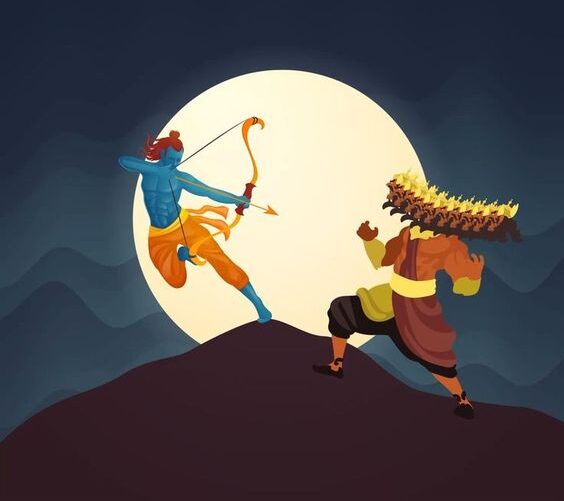Introduction
Dussehra, also known as Vijayadashami, is one of India’s most widely celebrated festivals, marking the triumph of good over evil. This grand festival, observed with enthusiasm and devotion, has deep-rooted cultural and mythological significance. In this blog, we will explore the essence of Dussehra and the customs and traditions that make it an extraordinary celebration, all while delving into the fascinating tales that underlie this remarkable holiday.
Dussehra: The Festival of Victory
Dussehra is celebrated on the tenth day of the lunar calendar month of Ashwin, which typically falls in September or October. The term “Dussehra” is derived from “Dasa-Hara,” meaning the defeat of the ten-headed demon king Ravana. This festival is not just about rejoicing in the victory of Lord Rama over Ravana but also signifies the ultimate triumph of virtue over vice.
The Legend of Lord Rama and Ravana
The essence of Dussehra lies in the timeless Indian epic, the Ramayana. This epic recounts the life of Lord Rama, a prince who, accompanied by his loyal wife Sita and devoted brother Lakshmana, embarks on a journey filled with trials and tribulations. The climax of the story takes place in the city of Lanka, where Ravana, a powerful and arrogant demon king with ten heads, abducts Sita. Lord Rama, with the help of the monkey-god Hanuman and an army of monkeys, wages a battle against Ravana to rescue his beloved wife.
The epic war culminates on the battlefield in Lanka. Lord Rama, invoking divine blessings, eventually defeats Ravana and brings an end to his tyranny, thus symbolizing the victory of good over evil. This momentous event is celebrated with great fervor as Dussehra.
Cultural Significance of Dussehra
Dussehra holds immense cultural significance in India. It is a day when people from all walks of life come together to celebrate the age-old victory of righteousness. Several customs and traditions mark this celebration:
- Ram Leela: In many regions of India, the Ram Lila is enacted during the nine days leading up to Dussehra. This is a dramatic reenactment of scenes from the Ramayana, showcasing the heroic deeds of Lord Rama. The climax of the Ram Lila is the battle between Rama and Ravana, culminating in Ravana’s defeat.
- Effigy Burning: The most iconic tradition of Dussehra is the burning of effigies, primarily those of Ravana, his brother Kumbhakarna, and his son Meghnad. This act symbolizes the destruction of evil and serves as a reminder of the consequences of wrongdoing. The sight of these towering effigies, filled with firecrackers, illuminating the night sky is a spectacle that captivates hearts.
- Vijayadashami Puja: On Dussehra, people also perform pujas (worship) to seek blessings for success and prosperity. Artists, students, and professionals often worship their tools and instruments, recognizing them as essential to their livelihood.
- Exchange of Sweets and Gifts: Dussehra is a time for the exchange of sweets and gifts among friends and family. It is a gesture of goodwill and signifies the strengthening of bonds.
- Processions and Parades: Many places in India hold grand processions and parades on Dussehra, featuring beautifully adorned idols of Lord Rama, Sita, Lakshmana, and Hanuman. These processions often include music, dance, and cultural performances.
Regional Variations
Dussehra is celebrated with regional variations across India, often reflecting local culture and folklore. In West Bengal, it coincides with Durga Puja, a festival dedicated to the goddess Durga. In the state of Mysore, Karnataka, Dussehra is a grand affair with a royal procession that showcases the region’s rich history and tradition. The essence of victory and the spirit of good over evil remain at the core of all these celebrations.
Conclusion
Dussehra, celebrated with great enthusiasm and joy, is a testament to the enduring appeal of the Ramayana and the timeless message of good triumphing over evil. The legends, customs, and traditions associated with this festival enrich the cultural tapestry of India. Dussehra is not just a day of celebration; it is a day that rekindles faith in righteousness, inspires the victory of good over evil, and strengthens the bonds of family and community. As the effigies of Ravana go up in flames, hearts are filled with the belief that ultimately, good deeds and virtue will always conquer the darkest of evils.

